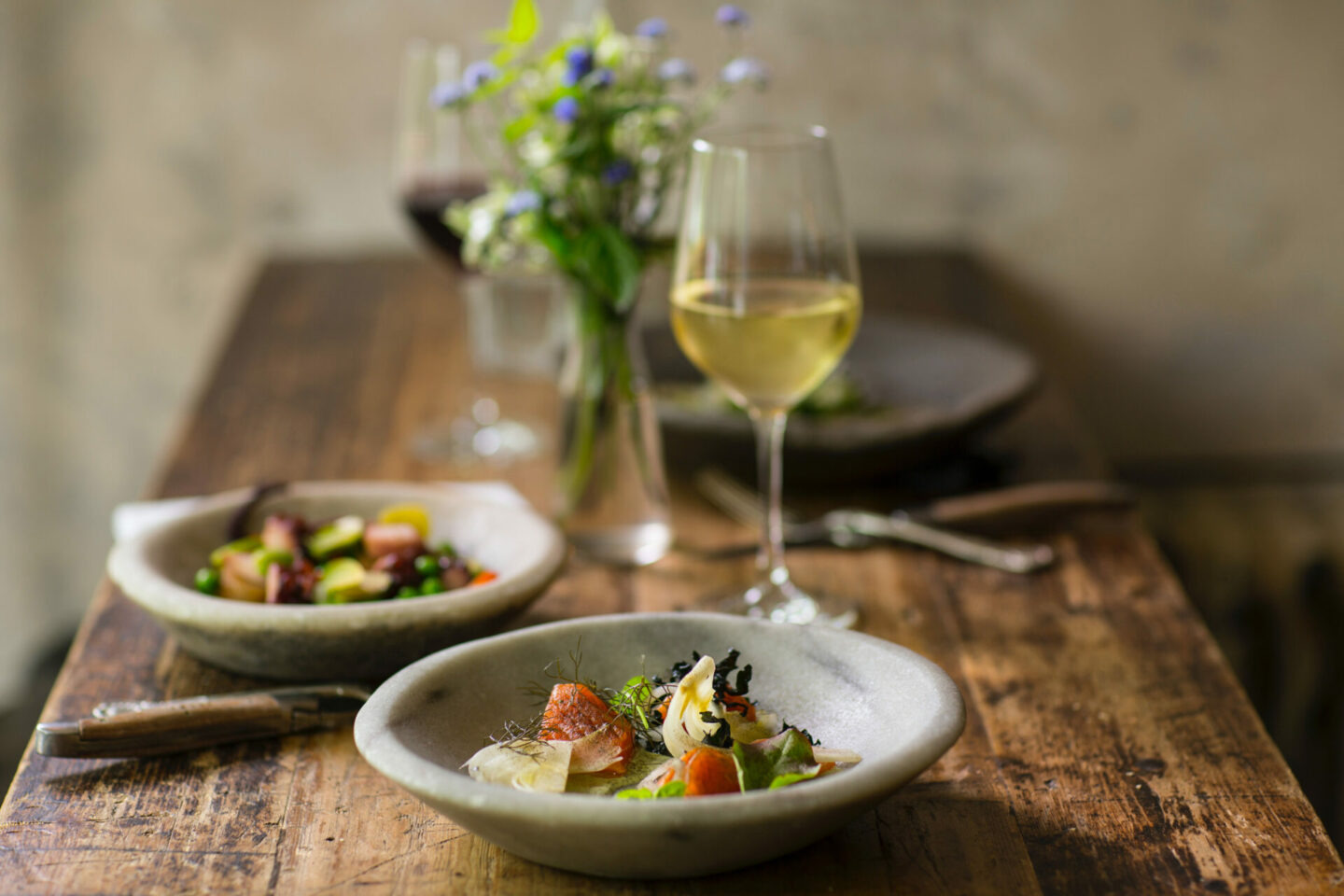
At first glance, there might not seem to be that much of a difference between these two great wines. They’re both dry, white wines, and are grown all over the world. There are some very important key differences between Chardonnay vs Sauvignon Blanc, though, and when it comes time to order, or pop a cock for your dinner party guests, you’ll want to know what makes each wine so unique!
If you’re looking to expand your knowledge of white wines, and learn all about the differences between Sauvignon Blanc vs Chardonnay, keep reading!
Chardonnay vs Sauvignon Taste Comparisons
In many respects, these two dry, white wines are quite different from one another! In fact, depending where and how it’s made, even the flavor of two different bottles of Chardonnay can be quite different from one another.
While they’re both known for being fruity, the two wines differ greatly in acidity, body, and alcohol content. They both have some citrus notes – but those aren’t the most dominant flavors at play for either wine.
What does Chardonnay taste like?
It’s difficult to characterize the flavor of Chardonnay, since it’s such a versatile wine. Depending on where it’s made – which since it’s not a temperature sensitive grape, includes wine regions all over the globe – and how it’s made, one Chardonnay can taste pretty different from another!
It’s best known as being a dry, fruity, full-bodied white wine. It’s also acidic, and has a high alcohol content. The dominant flavors you might be able to pick up in your glass include yellow and green apple, pineapple, star fruit, and lemon.
If you’re enjoying an oaked Chardonnay, you might also notice the creamy, or buttery quality of the wine. Wines that are aged in oak take on a rich vanilla flavor, or creamy mouthfeel, because of how the tannins in the wine interact with the soft wood tannins of the toasted barrel. California Chardonnay, for example, is usually heavily oaked.

What does Sauvignon Blanc taste like?
Sauvignon Blanc packs in bold, powerful flavors like gooseberry, freshly cut grass, fresh herbs, grapefruit, green melon, and lime. It’s known for being very fruity (not to be confused with sweet), and having a high acidity. This gives it a crisper, tart flavor.
Sauvignon Blanc originated from the Bordeaux region of France and today, is grown in four main regions – the Loire Valley in France, the South Island of New Zealand, the Andes Mountains in Chile, and northern California. It grows well in both warm and cool climate regions, developing unique flavors depending on where it’s grown.
Chardonnay vs Sauvignon Food Pairings
When it comes to food pairings, there’s definitely a few things you’ll want to keep in mind when selecting your ideal bottle of wine. While Sauvignon Blanc can be a little more cut and dry (no pun intended!) when it comes to pairings, you’ll need to play extra close attention when it comes to Chardonnay.
Best Chardonnay Food Pairings
There’s one pretty big question you’ll want to ask yourself about your bottle of Chardonnay before you start planning what to serve for entrees and appetizers; Where was it made? Chardonnay is a widely planted, and where it’s from will absolutely affect the flavor and the feel of the wine. If it’s a California Chardonnay, chances are it’s been aged in oak, and has that delicious, buttery feeling. These wines pair wonderfully with buttery and creamy dishes like risottos, pasta entrees featuring pesto or cheeses, and most green vegetables.
If you’re drinking a bottle of unoaked Chardonnay – like one made in Burgundy, France, for example – you’ll want to pair it with more citrus forward dishes. Unoaked Chardonnays have a higher acidity and are a nice complement to many chicken dishes. I epsecially love it with lemon chicken dishes! From personal experience, I can tell you it also goes along nicely with fish entrees like halibut, salmon, swordfish.
Chardonnay is also complemented by soft cheeses like brie and goat cheese. Keep that in mind if you’re looking to put together a charcuterie board!

Best Sauvignon Blanc Pairings
The great thing about Sauvignon Blanc is it’s very food friendly! You’ll have a lot of delicious options to choose from! It pairs well with seafood, chicken, green vegetables, and even herb-forward sauces like pesto and chimichurri. I love making dishes like Chicken Piccata, Grilled Mango Chicken, and Grilled Pork Tenderoloin with Chimichurri, whenever I’m getting ready to uncork a refrshingly crips bottle od Sauvignon Blanc, but it also goes nicely with simple sides like roasted vegetables and a pasta with pesto.
Conclusion
Both of these popular white wines are delicious, and have a lot of versatility when it comes to food pairings! Although these two grape varieties have a lot in common at first glance, go ahead and put your pallet to the test! You don’t need to be a sommelier to pick out the differences, and chances are, you’ll be able to taste and feel the differences between two bottles of Chardonnay.
Depending on your favorite style of wine and your mood, you may find yourself reaching for a glass of one or the other!
Frequently Asked Questions
Is Sauvignon Blanc sweet?
No, Sauvignon Blanc is actually a dry wine! It does have big, bold, tart tropical fruit flavors like gooseberry, green mellon, and grapefruit. In warmer climates, like northern California, you might also be able to taste notes of white peach, but the fruity flavors of Sauvignon Blanc shouldn’t be mistaken for sweet!
Is Chardonnay Sweet?
By and large, Chardonnay is a full-bodied white wine that’s known for being dry. Because it isn’t a temperature sensitive grape, though, it can be found growing in vineyards all over the world – and thus vary greatly from region to region. Depending on where and how it’s made, there can be some “sweetness” from residual sugars, or take on sweet flavors if it’s been heavily oaked. Chardonnay is also often described as buttery.
Is Chardonnay a white wine?
Yes, Chardonnay is a full-bodied white wine!
What is the dryest white wine?
Both Chardonnay and Sauvignon Blanc are known for being very dry wines, but some bone dry white wines you might not have heard of before include Muscadet, Soave, Assyrtiko.
Other Wine Education Posts You’ll Love
Best Chardonnay Wine for Any Budget
